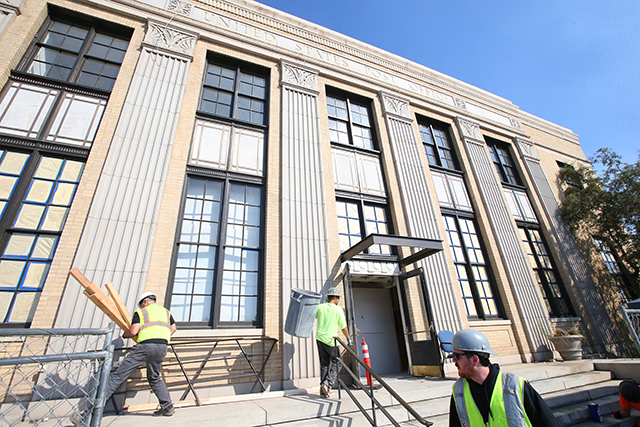Humm claims game-changing process for kombucha
Published 12:00 am Wednesday, September 5, 2018

- Meg Roussos / The BulletinHumm Kombucha comes in a variety of flavors.
Consider what goes into kombucha: sweetened tea and a symbiotic culture of bacteria and yeast.
Also known as a SCOBY, that gelatinous white floating thing sparks a fermentation process that results in a fizzy, acidic-tasting drink. And people love it.
Trending
“Kombucha has an efficacy that makes people feel a certain way,” said Jamie Danek, CEO of Bend-based Humm Kombucha. Calling itself the “world’s most drinkable kombucha,” Humm helped break kombucha out of the health-food category and into chains including Costco and Walmart. It’s one of the five best-selling brands, Danek said, citing beverage industry market research.
But there’s still a lot that people don’t understand about kombucha, said Chris Curtain, assistant professor of food science and technology at Oregon State University. Unless a kombucha maker heat pasteurizes the product, killing all the microbes created during fermentation, or keeps it cold until it’s consumed, the presence of yeast and sugar could form more alcohol, he said.
“Alcohol creep,” as Curtain called it, is a problem because most kombuchas are not regulated or taxed as alcoholic beverages. To be considered nonalcoholic, kombucha should have less than 0.5 percent alcohol by volume.
That’s why Humm spent four years and more than $4 million on a patent-pending process that will keep the alcohol content stable, even if a case goes warm on a loading dock, Danek said.
“It’s about staying compliant,” Danek said. “When you’re big enough, and you’re scaling and you’re selling to Walmart and Costco, you have to be compliant.”
Humm won’t describe the process, which has been in use since April, but says it does not require “extensive” processing, filtration or heat to remove alcohol. The process does not involve diluting concentrated kombucha with water, the company says.
Trending
“Nobody has figured out how to make a live, raw product that is 100 percent kombucha,” Danek said. “This is a competitive advantage for a period of time.”
The advantage could be simply fending off lawsuits. Humm is one of seven companies that was sued in the past 12 months by Tortilla Factory, a Los Angeles company that makes Kombucha Dog, which is sold as an alcoholic beverage. The lawsuit against Humm claims that the company engaged in false advertising because independent testing showed its products contained 1.2 percent to 2.1 percent alcohol.
Danek said there’s no truth to those claims. “We don’t have alcohol in our kombucha, and our sugars are labeled appropriately,” she said.
Sugar content is another truth-in-advertising issue facing the kombucha industry. Danek said Humm has honestly labeled the sugar content of its product since the beginning, even though it could be a competitive disadvantage when other brands were claiming as few as 2 grams per serving.
Most consumers don’t understand what’s behind all the various products marketed as kombucha or probiotic drinks, Curtain said. “If you look at the larger, successful producers, they’re very careful with how they’re marketing their product. It’s a very rapidly growing industry that’s growing out of very much garage-scale production.”
Another Oregon kombucha maker, Brew Dr. Kombucha, a subsidiary of Portland-based Townshend’s Tea Company, is using the transparency of its process as a marketing tool. The company website describes how its “spinning cone column” removes alcohol after fermentation but leaves in live cultures.
Kombucha is marketed as a healthy alternative to sugary soda, but it’s unclear what the health benefits are and what aspect of the complex brew is responsible, Curtain said. It could be the live microbes, or the acids, or a combination of the two, he said.
“There are all these different perceptions about what’s important about the product and what it is and what it isn’t.”
— Reporter: 541-617-7860, kmclaughlin@bendbulletin.com








